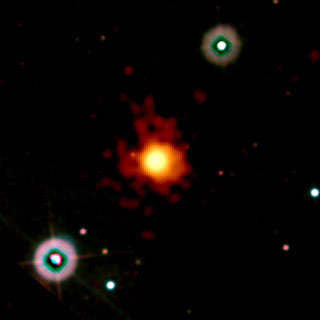GRB 090423: One for the record books, gamma-ray burst 090423 was detected April 23, 2009, by the Swift Gamma-Ray Burst Explorer mission. The image is a composite of data from UVOT and XRT.
Credit: NASA/Goddard Space Flight Center
One more thing. In April 2009, we detected a gamma-ray burst, designated GRB 090423. As of now it is the most distant object that anyone has observed with a spectrometer, 13 billion light years away. This places it at a redshift of 8, that’s about 630 million years after the Big Bang. This was one for the record books, but every year we break more records of different kinds, because with better instruments and more light-sensitive detectors and imaging technology, we are capturing greater distances, seeing further and further back in time. Even though gamma-ray astronomy is a late bloomer, the past 50 years have been an astonishing leap forward in understanding the origin, structure, evolution, and destiny of the Universe by studying gamma-ray bursts. Looking back I’m glad I was “convinced” to enter astrophysics. I never would have imagined in my wildest dreams that I could be a part of such an amazing story.


